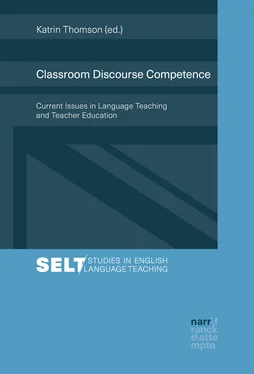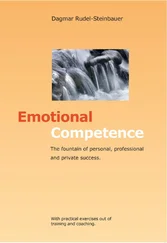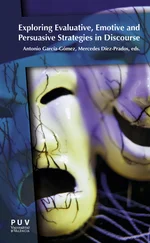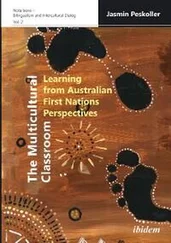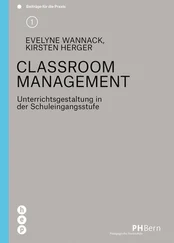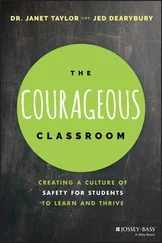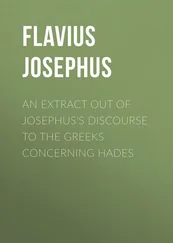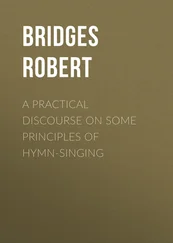Another reason for teachers’ classroom discourse competences to remain on the sidelines of scholarly interest certainly has to do with a number of already existing concepts (such as Johnson’s (1995) classroom communicative competence or Walsh’s (e.g. 2011) classroom interactional competence), which might give the impression that there is no need to further pursue this line of enquiry if it would perhaps only generate ‘more of the same’ (cf. Bresges et al. 2014: 9). Without a doubt, especially Walsh’s work from an Applied Linguistics-perspective has been a major contribution to this research area and scholarly discussion. It certainly also informs many of the chapters in this volume. However, Walsh’s conceptualization of CIC (classroom interactional competence) also has its limitations. First of all, it is the author himself who considers it to be of a “preliminary” (Walsh 2012: 1) and “initial” quality (Walsh 2012: 1 and 12, 2014: 5). Indeed, CIC is not a comprehensive competence model but rather describes a selection of “interactional strategies” (Walsh 2011: 177) which enable “teacher[s] and learner [ s ] […] to use interaction as a tool for mediating and assisting learning” (Walsh 2011: 158 and 165, 2012: 1 and 5, 2013: 46 and 51, 2014: 4, Walsh/Li 2016: 495, italics KT). Referring to both teachers and learners, CIC, hence, is not conceptualized as a professional competence of language teachers. “CIC,” Walsh explains, “focuses on the ways in which teachers’ and learners’ interactional decisions and subsequent actions enhance learning and learning opportunity.” (Walsh 2011: 165f.). In his work, the author analyzes “how teachers and learners display CIC” in authentic classroom data (ibid.: 166) and explores some possibilities of “how CIC can be developed in both teachers and learners” (ibid.: 177). Undeniably, this and other concepts are related to CDC in many ways and may also bear resemblance to it as far as terminology, or ‘labelling’, is concerned, but they do not exactly coincide with what CDC as a teacher competence refers to. It is in the nature of things that ‘preliminary’ work calls for further scholarly inquiry along these lines. Against this backdrop, the purpose of this volume, thus, is also to take into account existing concepts as well as the most recent developments in this field (e.g. Kuster et al. 2014, ECML 2019), in order to give further impetus to the scholarly discussion on classroom discourse and foreign language teacher education.
Finally, the neglect of classroom discourse competences in teacher education can also be ascribed to a structural problem of teaching degree programs at universities in Germany. University students of foreign languages, literatures and cultures are usually required to take Sprachpraxiskurse , i.e. foreign language classes on grammar, phonetics/phonology, oral presentation, academic writing etc. – regardless of whether they are enrolled in, for instance, North American Studies, Applied Linguistics or EFL teaching degree programs. Designed to increase students’ general and academic L2 proficiency, these courses do not only provide opportunities for acquiring linguistic knowledge about the target language system but also for improving foreign language skills through active language use and practice in academic contexts. However, specialized courses for teacher candidates are usually not part of these language proficiency programs. Thus, the underlying implication of this approach is either that teachers’ L2 use in classroom settings is devoid of any professional dimension; or, that professional L2 classroom discourse competence somehow automatically evolves from a synthesis of declarative knowledge and foreign language proficiency while teaching, and that it, therefore, does not require any systematic training. Whatever the underlying assumption may be, it is interesting that neither the current national standards of EFL teacher education in Germany (KMK 2019) nor existent models of EFL teachers’ professional competence (e.g. Roters et al. 2014) distinguish between general foreign language proficiency and teachers’ classroom discourse competence. Yet considering the deeper implications of foreign language teachers’ tasks, (verbal) actions and responsibilities in classroom discourse , it becomes apparent that a differentiation between L2 proficiency and CDC is indeed necessary. From a purely language-related point of view, it is a fallacy to assume that a high level of L2 proficiency alone would qualify teachers to master the multitude of diverse and complex discoursal tasks in foreign language classrooms effectively.
‘L2 classroom discourse competence’ has different theoretical underpinnings than ‘foreign language competence’, because – to put it simply – the former is a context-specific professional competence whereas the latter is not. Any conceptualization of CDC and its subcompetences, therefore, presupposes a more detailed description of the discoursal context in which this competence is required – in this case: the educational context of foreign language education which is commonly, although not exclusively, embedded in the physical space of a classroom. In other words: In order to conceptualize CDC, it has to be clear what in fact is actually meant by ‘classroom discourse’. This clarity, however, cannot be taken for granted because the term ‘classroom discourse’ itself is used quite heterogeneously. Thus, it seems not only important but also necessary to shed some light on the term’s meaning and use in the context of this volume.
3 Defining ‘Classroom Discourse’
To begin with, the term discourse itself carries different implications. Approaching it from an Applied Linguistics-perspective, ‘discourse’ (sometimes referred to as discourse with a small ‘d’) denotes “a longer stretc[h] of spoken or written language in context” (Walsh 2013: 23), and scholars addressing it from this angle are interested, for instance, in exploring the underlying structures or patterns of a sequence and in analyzing its discursive properties (cf. Hallet 2017, Janks/Locke 2008). On the other hand, ‘discourse’ with a capital ‘D’ draws on Foucault’s work and refers to the sociocultural practices through which social, political, cultural etc. realities (truths and knowledge) are not only represented but also constituted and constructed by members of a discourse community (cf. Hallet 2017, Janks/Locke 2008). Hence, notions of authority, power, and hierarchy are some of the related key concepts, which, if transferred and applied to classroom discourse, allow for a close analysis and understanding of the otherwise hidden or unnoticed dynamics of classroom interaction and communication. With regard to foreign language teacher education and the conceptualization of classroom discourse competence, it is apparent that both meanings of ‘discourse’ need to be taken into account.
As regards the term classroom discourse , matters are equally complex. First of all, ‘classroom discourse’ is often used synonymously and interchangeably with ‘classroom interaction’ and ‘classroom communication’ although these concepts are not congruent (see the contributions of Christ, Gnutzmann, and House in Bausch et al. 2000, Thomson 2020b). Strictly speaking, using them synonymously is not quite accurate, but not always evitable either – be it only for stylistic reasons. Complicating matters further, different meanings of the term ‘classroom discourse’ itself can be found as well. (a) In some publications, it is interpreted rather narrowly in that it only refers to the classroom language or classroom phrases required for managing classrooms. That is, ‘classroom discourse’ used in that sense does not encompass content-related classroom interaction (e.g. Klippel/Doff 32012, Böttger 32020). (b) Others (e.g. Klippel 2003) define ‘classroom discourse’ in terms of language mode and class time: “Everything spoken in an English lesson makes up Classroom Discourse.” (ibid.: 56, italics KT). (c) There seems to be a strong tendency to equate ‘classroom discourse’ with teacher talk. Such approaches do recognize the key role of teachers in classroom discourse, but at the same time also reduce it conceptually to the realms of teacher talk, i.e. to the verbal actions of teachers, not necessarily also considering those of learners (e.g. Deters-Philipp 2018, Klippel 2003). (d) Finally, a broader, more holistic view on ‘classroom discourse’ – which is also favored here – acknowledges the concept’s complexity, multimodality and mediality (e.g. Hallet 2006, Hallet/Königs 2010, Thomson 2020b, Tsui 2008). Tsui (2008: 261), for instance, provides the following definition:
Читать дальше
